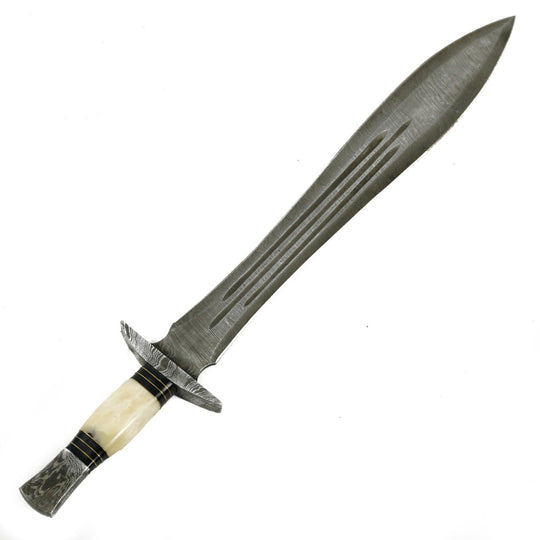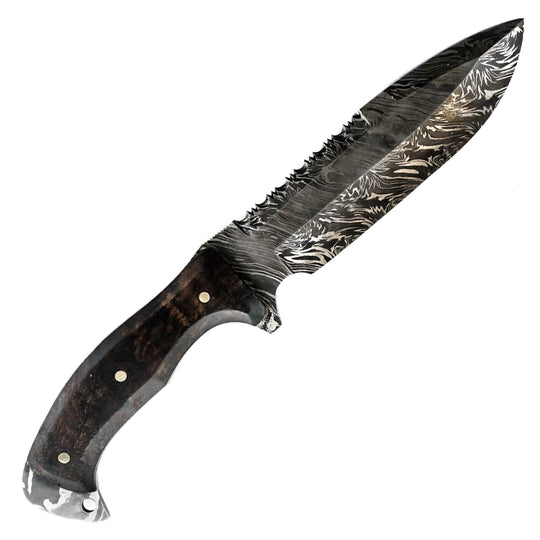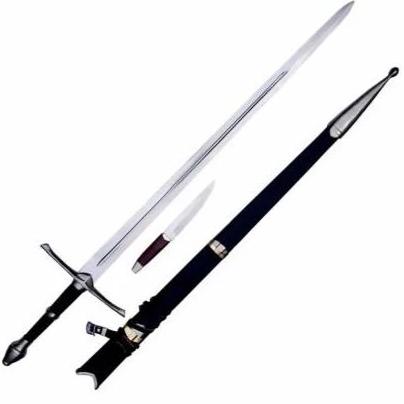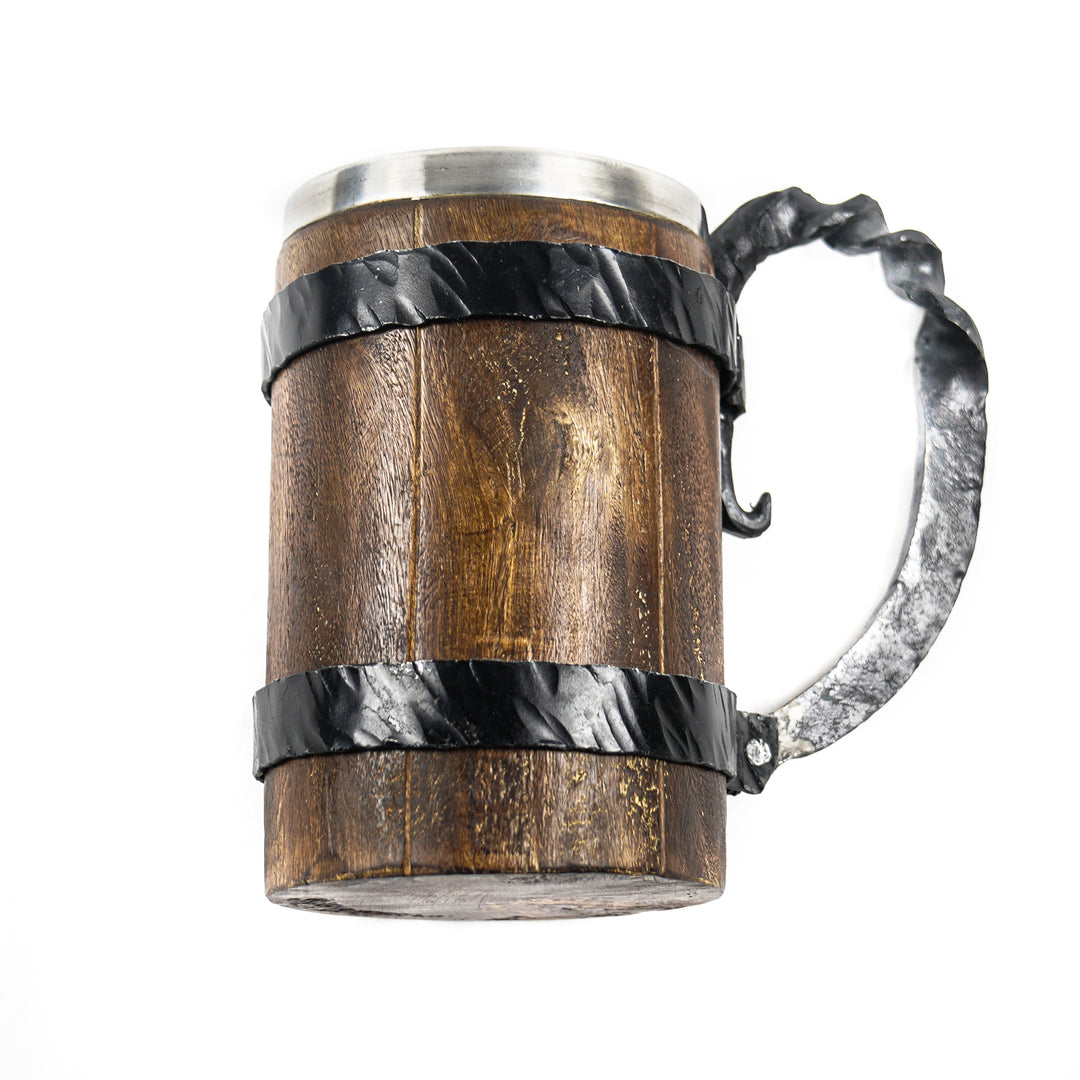The Resplendent Renaissance Blades: A Dive into the Artistry of Battling Blades Swords
Introduction:
In the canvas of history, few eras can match the Renaissance in terms of its influence on art, culture, and warfare. During a time of creative flourishing sword making saw an advancement resulting in exquisite weapons that blended deadly effectiveness with breathtaking aesthetics. From the courts of Italy to the battlefields of Europe Renaissance swords symbolized power, expertise, and elegance. This exploration takes us into the intricacies of Renaissance-era swords uncovering their craftsmanship, symbolism, and lasting impact.The Evolution of Renaissance Swords:
The Renaissance era represented a period in the evolution of swords as they evolved from the unwieldy weapons of the Middle Ages to more streamlined and nimble designs. Amongst these innovations stood out the rapier as one of the sword types of that time. Known for its blade intricate hilt design and focus on thrusting techniques the rapier became synonymous with dueling and self-defense among the class during this period.Yet beyond just rapiers existed an array of variations across Europe that showcased distinct cultural and martial influences, from their creators.
During the Renaissance era a wide variety of swords, from Germany's swept hilt designs to Italy's spadone showcased intricate forms and styles.
Craftsmanship and Artistry:
Skilled artisans dedicated themselves to perfecting the artistry of Renaissance swords investing years in apprenticeship to master the techniques needed to create these weapons. The blades, crafted from high-carbon steel, were meticulous. Sharpened for performance. However, it was in the details of the hilts where swordsmiths truly showcased their craftsmanship. Elaborate designs featuring heraldic and religious motifs adorned the guards and pommels.
Renaissance swords transcended functionality; they became symbols of status for nobles and aristocrats who commissioned these weapons as reflections of their social status and refined preferences. Swordsmiths spared no effort in producing pieces that not only excelled in combat but also exuded opulence and sophistication.
Renaissance swords transcended functionality; they became symbols of status for nobles and aristocrats who commissioned these weapons as reflections of their social status and refined preferences. Swordsmiths spared no effort in producing pieces that not only excelled in combat but also exuded opulence and sophistication.
Cultural Significance:
The cultural importance of Renaissance swords extended beyond their symbolic significance to the societies that crafted them. In Renaissance Italy, swordsmanship evolved into a pursuit that attracted students from parts of Europe to renowned fencing schools. These schools not only imparted the aspects of swordplay but also emphasized values, like discipline, honor, and respect. Similarly in regions guilds of swordsmiths formed close-knit communities dedicated to preserving and advancing their artistry by passing down generations of accumulated wisdom and expertise.
Technological Innovations:
During the Renaissance period marked by innovation and exploration advancements in metallurgy played a role in sword-making progress. Techniques like refining steel and developing effective tempering methods empowered swordsmiths to create blades of unparalleled quality and durability. Additionally enhancements in design. Such as the incorporation of basket guards and finger rings. Improved wielder's grip and control over these swords making them both aesthetically pleasing and functional tools, for combat.
Global Influence:
Despite being associated with Europe the impact of the Renaissance transcended boundaries resonating far beyond the continent's confines.
Through the exchange of goods, exploration, and military conquests European nations spread their combat techniques and weapons to lands impacting the art of sword-making in regions, like Asia, Africa, and the Americas. These diverse cultures reciprocated by adding their innovations and unique styles to the ever-evolving craft of swordsmithing creating a tapestry of cultural interchange and adaptation.
Through the exchange of goods, exploration, and military conquests European nations spread their combat techniques and weapons to lands impacting the art of sword-making in regions, like Asia, Africa, and the Americas. These diverse cultures reciprocated by adding their innovations and unique styles to the ever-evolving craft of swordsmithing creating a tapestry of cultural interchange and adaptation.
Enduring Mystique:
Even after many centuries have passed Renaissance swords continue to captivate audiences with their enduring charm. Whether showcased in museums or used in reenactments and displays, these ancient relics serve as a link between eras and the present day allowing us to appreciate the craftsmanship and artistry of their makers. The allure of Renaissance swords also lives on in imagination conjuring images of knights daring musketeers and adventurous swashbucklers. In a world dominated by mass-produced items and transient possessions, the lasting legacy of Renaissance swords stands as a tribute to the enduring essence of workmanship, artistic talent, and human creativity.
Symbolism and Iconography:
In addition, Renaissance swords carried layers of symbolism and iconography during an era characterized by political intrigue and social hierarchy. These weapons symbolized authority, chivalry, and honor in a time when such values held importance.
Knights and nobles viewed the sword as more than a weapon. It represented knighthood and valor earned through acts of bravery and loyalty. In ceremonies, swords held value symbolizing the rights of rulers and the importance of oaths sworn upon them.
Additionally, swords often featured engravings and inscriptions that reflected their owner's identities and loyalties. Whether displaying house crests or warrior mottoes these embellishments added a touch to each blade making them treasured heirlooms passed down through generations.
Additionally, swords often featured engravings and inscriptions that reflected their owner's identities and loyalties. Whether displaying house crests or warrior mottoes these embellishments added a touch to each blade making them treasured heirlooms passed down through generations.
Legacy and Influence:
Though the Renaissance era concluded its impact on our understanding of swords and swordsmanship endures. The principles of balance, precision, and technique embodied by Renaissance swords remain essential in fencing and martial arts practices.
Furthermore, the timeless allure of Renaissance swords transcends combat applications. Collectors worldwide are fascinated by these relics from history eagerly seeking out pieces to enrich their collections.
In culture, Renaissance swords serve as enduring symbols of heroism and adventure. They feature prominently in literature, movies, and video games as representations of courage and daring. From the thrilling adventures of musketeers, in stories to the battles of mythical fighters, the allure and charm of Renaissance swords continue to enchant people all over the world.
Furthermore, the timeless allure of Renaissance swords transcends combat applications. Collectors worldwide are fascinated by these relics from history eagerly seeking out pieces to enrich their collections.
In culture, Renaissance swords serve as enduring symbols of heroism and adventure. They feature prominently in literature, movies, and video games as representations of courage and daring. From the thrilling adventures of musketeers, in stories to the battles of mythical fighters, the allure and charm of Renaissance swords continue to enchant people all over the world.
Conclusion:
In records, the Renaissance era stands as a tribute to the capabilities of human imagination and skill. During this period sword craftsmanship reached levels of refinement and grace giving rise to weapons that were not just effective in battle but also exquisite pieces of art.
From the shining rapiers wielded by duelists to the two-handed swords carried by German soldiers for hire Renaissance swords embody the essence of an era marked by innovation, ambition, and exploration. While knights and nobles are a thing of the past their sword's legacy lives on as symbols of a time when skillful craftsmanship and artistic expression thrived alongside strength.
From the shining rapiers wielded by duelists to the two-handed swords carried by German soldiers for hire Renaissance swords embody the essence of an era marked by innovation, ambition, and exploration. While knights and nobles are a thing of the past their sword's legacy lives on as symbols of a time when skillful craftsmanship and artistic expression thrived alongside strength.











